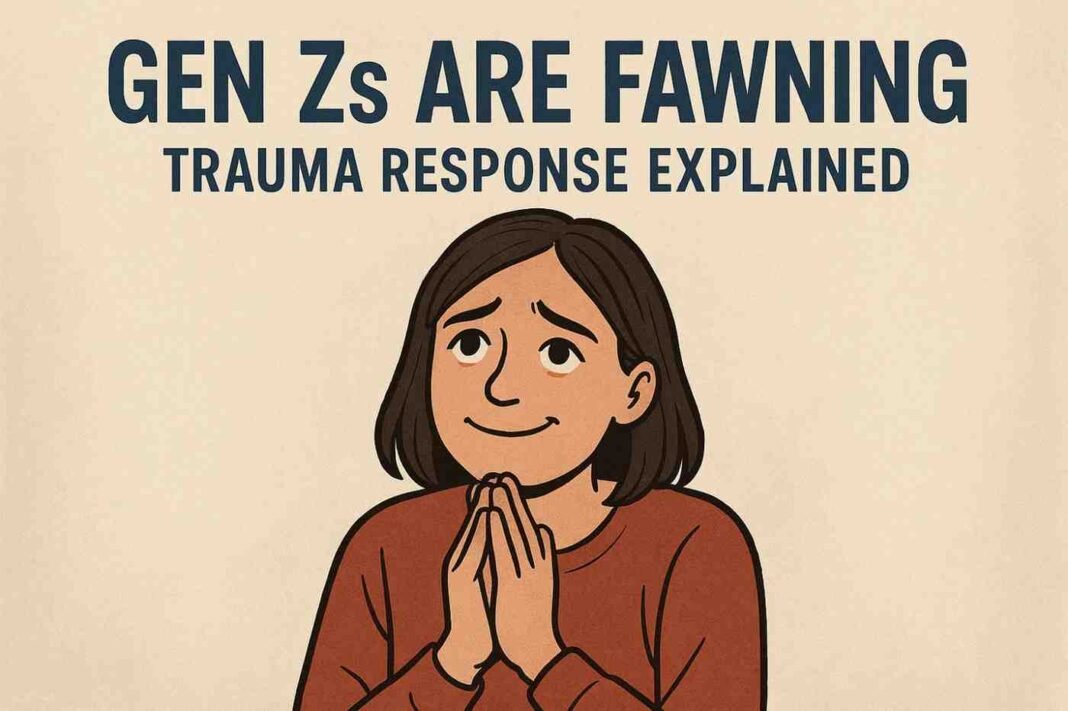A Coping Strategy Rooted in Survival
In recent years, the term fawning has gained traction among mental health professionals and Gen Z alike, yet many remain unclear about its deeper meaning and implications. Far from being just another buzzword, fawning is a legitimate psychological trauma response. Unlike the more commonly known fight, flight, or freeze responses, fawning involves appeasing others—often at the expense of one’s own needs—to maintain a sense of safety and avoid conflict.
According to Dr Shorouq Motwani, a psychiatrist at Lilavati Hospital, fawning typically originates in childhood, especially in environments that are emotionally unstable or abusive. “It’s a survival mechanism born from chronic exposure to power imbalances, control, and emotional invalidation,” he explains. Over time, the behaviour becomes deeply ingrained and is often mistaken for politeness or agreeableness.
The Roots of Fawning: Early Trauma and Emotional Instability
Fawning develops when a child learns that the best way to prevent emotional or physical harm is by pleasing others. In homes where expressing disagreement or asserting boundaries leads to punishment, rejection, or guilt, children may suppress their own emotions and needs to maintain harmony. This dynamic fosters hypervigilance—being acutely attuned to others’ moods, reactions, and expectations.
Such children often grow into adults who struggle to voice their opinions, say “no,” or prioritise their well-being. They find themselves constantly adjusting their behaviour to avoid disapproval, even in situations where there is no real threat.
Why Gen Z Is Especially Affected
Gen Z appears to be particularly susceptible to the fawning response. Experts point to multiple contributing factors: increasing awareness of mental health, growing up in highly competitive academic and social environments, and the constant validation-seeking patterns reinforced by social media.
“Digital platforms encourage a performative sense of identity. The likes, shares, and comments feed into a system where approval becomes currency,” says Dr Motwani. In such settings, conflict avoidance and people-pleasing become tools for emotional self-regulation and social survival.
In addition, many Gen Z individuals have grown up witnessing or experiencing strained family dynamics, including emotionally unavailable caregivers, high parental expectations, or unresolved trauma. These experiences reinforce the idea that their value is tied to how well they can serve others’ needs.
The Hidden Costs of Fawning
While fawning may help individuals avoid immediate threats or discomfort, it can be detrimental in the long term. Chronic people-pleasing erodes personal identity, limits emotional expression, and hampers one’s ability to set boundaries. This often leads to unhealthy, co-dependent relationships and emotional burnout.
“Fawning delays the development of autonomy and self-clarity,” says Dr Motwani. “It might look like emotional maturity on the surface, but internally, it’s often driven by fear and anxiety.” Over time, this maladaptive coping mechanism can lead to depression, low self-worth, and even resentment.
Breaking the Cycle: From Surviving to Thriving
The first step in overcoming fawning is recognising its presence. Awareness allows individuals to question their motivations: Am I doing this to genuinely connect, or out of fear of rejection?
Therapy is a powerful tool in this healing journey, particularly modalities that address trauma and emotional regulation, such as cognitive-behavioural therapy (CBT), dialectical behaviour therapy (DBT), or inner child work. Mindfulness practices can also help individuals stay present and become more attuned to their own needs rather than constantly monitoring others.
Building self-compassion is equally crucial. “Learning to validate your own emotions and establish boundaries isn’t selfish—it’s a necessary part of healing,” says Dr Motwani. Over time, individuals can replace fawning with authentic connection, leading to healthier relationships and a stronger, more defined sense of self.
Moving Toward Emotional Freedom
While fawning may have served a purpose in the past, continuing this behaviour into adulthood can hinder emotional growth and personal fulfilment. As more members of Gen Z explore mental health topics, they are beginning to identify these patterns and seek tools to break free. Through therapy, self-awareness, and intentional boundary-setting, the path to emotional freedom and authentic living becomes not just possible—but sustainable.








